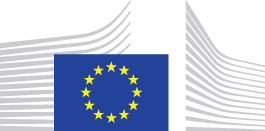Home > Press > Nano in food and agriculture: Regulations require collaboration to ensure safety
 |
Abstract:
An overview of regulatory solutions worldwide on the use of nanotechnology in food and feed production shows a differing approach: only the EU and Switzerland have nano-specific provisions incorporated in existing legislation, whereas other countries count on non-legally binding guidance and standards for industry. Collaboration among countries across the globe is required to share information and ensure protection for people and the environment, according to a JRC co-authored paper.
Nano in food and agriculture: Regulations require collaboration to ensure safety
Ispra, Italy | Posted on September 14th, 2015The paper Regulatory aspects of nanotechnology in the agri/feed/food sector in EU and non-EU countries reviews how potential risks or the safety of nanotechnology are managed in different countries around the world and recognises that this may have implication on the international market of nano-enabled agricultural and food products.
Nanotechnology offers substantial prospects for the development of innovative products and applications in many industrial sectors, including agricultural production, animal feed and treatment, food processing and food contact materials. While some applications are already marketed, many other nano-enabled products are currently under research and development, and may enter the market in the near future. Expected benefits of such products include increased efficacy of agrochemicals through nano-encapsulation, enhanced bioavailability of nutrients or more secure packaging material through microbial nanoparticles.
As with any other regulated product, applicants applying for market approval have to demonstrate the safe use of such new products without posing undue safety risks to the consumer and the environment. Some countries have been more active than others in examining the appropriateness of their regulatory frameworks for dealing with the safety of nanotechnologies. As a consequence, different approaches have been adopted in regulating nano-based products in the agri/feed/food sector.
The analysis shows that the EU along with Switzerland are the only ones which have introduced binding nanomaterial definitions and/or specific provisions for some nanotechnology applications. An example would be the EU labelling requirements for food ingredients in the form of 'engineered nanomaterials'. Other regions in the world regulate nanomaterials more implicitly mainly by building on non-legally binding guidance and standards for industry.
The overview of existing legislation and guidances published as an open access article in the Journal Regulatory Toxicology and Pharmacology is based on information gathered by the JRC, RIKILT-Wageningen and the European Food Safety Agency (EFSA) through literature research and a dedicated survey.
####
For more information, please click here
Contacts:
Elena Gonzalez Verdesoto
Copyright © European Commission, Joint Research Centre (JRC)
If you have a comment, please Contact us.Issuers of news releases, not 7th Wave, Inc. or Nanotechnology Now, are solely responsible for the accuracy of the content.
| Related Links |
![]() Regulatory aspects of nanotechnology in the agri/feed/food sector in EU and non-EU countries:
Regulatory aspects of nanotechnology in the agri/feed/food sector in EU and non-EU countries:
| Related News Press |
News and information
![]() Researchers develop molecular qubits that communicate at telecom frequencies October 3rd, 2025
Researchers develop molecular qubits that communicate at telecom frequencies October 3rd, 2025
![]() Next-generation quantum communication October 3rd, 2025
Next-generation quantum communication October 3rd, 2025
![]() "Nanoreactor" cage uses visible light for catalytic and ultra-selective cross-cycloadditions October 3rd, 2025
"Nanoreactor" cage uses visible light for catalytic and ultra-selective cross-cycloadditions October 3rd, 2025
Govt.-Legislation/Regulation/Funding/Policy
![]() New imaging approach transforms study of bacterial biofilms August 8th, 2025
New imaging approach transforms study of bacterial biofilms August 8th, 2025
![]() Electrifying results shed light on graphene foam as a potential material for lab grown cartilage June 6th, 2025
Electrifying results shed light on graphene foam as a potential material for lab grown cartilage June 6th, 2025
![]() Institute for Nanoscience hosts annual proposal planning meeting May 16th, 2025
Institute for Nanoscience hosts annual proposal planning meeting May 16th, 2025
Announcements
![]() Rice membrane extracts lithium from brines with greater speed, less waste October 3rd, 2025
Rice membrane extracts lithium from brines with greater speed, less waste October 3rd, 2025
![]() Researchers develop molecular qubits that communicate at telecom frequencies October 3rd, 2025
Researchers develop molecular qubits that communicate at telecom frequencies October 3rd, 2025
![]() Next-generation quantum communication October 3rd, 2025
Next-generation quantum communication October 3rd, 2025
![]() "Nanoreactor" cage uses visible light for catalytic and ultra-selective cross-cycloadditions October 3rd, 2025
"Nanoreactor" cage uses visible light for catalytic and ultra-selective cross-cycloadditions October 3rd, 2025
Interviews/Book Reviews/Essays/Reports/Podcasts/Journals/White papers/Posters
![]() Spinel-type sulfide semiconductors to operate the next-generation LEDs and solar cells For solar-cell absorbers and green-LED source October 3rd, 2025
Spinel-type sulfide semiconductors to operate the next-generation LEDs and solar cells For solar-cell absorbers and green-LED source October 3rd, 2025
![]() Rice membrane extracts lithium from brines with greater speed, less waste October 3rd, 2025
Rice membrane extracts lithium from brines with greater speed, less waste October 3rd, 2025
Food/Agriculture/Supplements
![]() New imaging approach transforms study of bacterial biofilms August 8th, 2025
New imaging approach transforms study of bacterial biofilms August 8th, 2025
![]() SMART researchers pioneer first-of-its-kind nanosensor for real-time iron detection in plants February 28th, 2025
SMART researchers pioneer first-of-its-kind nanosensor for real-time iron detection in plants February 28th, 2025
![]() Silver nanoparticles: guaranteeing antimicrobial safe-tea November 17th, 2023
Silver nanoparticles: guaranteeing antimicrobial safe-tea November 17th, 2023
Safety-Nanoparticles/Risk management
![]() Onion-like nanoparticles found in aircraft exhaust May 14th, 2025
Onion-like nanoparticles found in aircraft exhaust May 14th, 2025
![]() Closing the gaps — MXene-coating filters can enhance performance and reusability February 28th, 2025
Closing the gaps — MXene-coating filters can enhance performance and reusability February 28th, 2025
|
|
||
|
|
||
| The latest news from around the world, FREE | ||
|
|
||
|
|
||
| Premium Products | ||
|
|
||
|
Only the news you want to read!
Learn More |
||
|
|
||
|
Full-service, expert consulting
Learn More |
||
|
|
||








